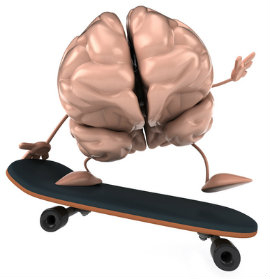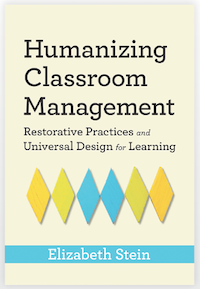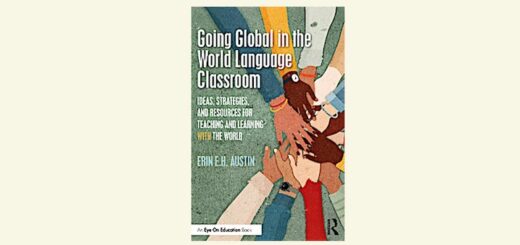Humanizing Inclusive Classroom Management
By Elizabeth Stein, Ed.D., NBCT

These methods oftentimes lead to so many middle schoolers nationwide lining up at the counseling center when they should be in class. Furthermore, in-school suspension procedures are still far from unusual.

The stories are overwhelmingly common. Student A disrupts class B. Student C’s behaviors challenge Teacher D’s instructional decisions and learning process for everyone in class. The result becomes a perception that it is the students who are disruptive and challenging. Yet is this actually true? I know this thought creates a stir out there…but stay with me here…
How about if we shift our view and think about the environment and conditions that WE create in our classrooms. Could it be that WE educators can design our classroom routines, procedures, and instructional process to eliminate some of the challenges and conditions that often cause these disruptions?
Yes! It IS possible.
If you’re skeptical, I hear you, and you’re in good company! However, there’s no harm in being curious and open-minded, right? So, keep reading, please! This post is simply an invitation to consider the possibility of what would happen in YOUR classroom if a few simple scientific facts were considered.
Three Considerations for Co-Creating
Inviting Classrooms
1. Teaching and Learning IS Emotional Work
Every learner (including every teacher!) comes to class with a mix and flow of emotions. It is a natural part of being human. Yes, we indeed have content to teach – and only a clock-ticking period to teach that content. However, we must never lose sight that there are emotions present – just swirling around in the minds of the very unique individuals we are privileged to teach. Sure, we do not always have time to attend to emotions directly. Yet we can consider ways of weaving in time for students to perceive, process, and express their thoughts.
2. Middle Schoolers Brains Are Resilient and Ready!
Research shows us that the middle school years are a unique and vital time in brain development (Armstrong, 2016; Immordino-Yang, 2015). Some quick brain basics for educators to remember as they design their classroom environment include

• Teen brains process 5-7 pieces of information at one time – so provide processing time along the way.
• Teen brains love to be social! So consider well-structured and organized small groups and peer collaborations.
• Teen brains naturally connect with digital materials. So remember to use multimedia to engage them!
3. Three Brain Basics to Remember!
Let’s start with a little context. Let’s bring Jake back into the conversation. Remember, Jake is any student in any classroom who is considered to be disruptive by expressing challenging behaviors. Let’s add the science behind one of the reasons to consider that the challenges are in the environment – not in the student. Three brain basics to consider when designing the classroom environment.
1. Amygdala: Located in our limbic system, our amygdala tells us if we are safe or not. If there is a perceived threat all, and I do mean all, attention goes to survival and there is no chance for us to think of anything else. Stress takes over and we look for ways to just make it through. (Enter any behaviors that Jake may exhibit.)
2. Hippocampus: If calm – we can learn the content in class and have a better chance of remembering the content for future use. If stressed, the amygdala is still in charge, and it doesn’t give our hippocampus much freedom to remember much of anything during a class lesson.
3. Pre-frontal Cortex (PFC): Our PFC activates as long as our amygdala lets it to do its job of allowing us to pay attention and apply the critical thinking skills needed in any classroom.
You don’t need a degree in neuroscience
Although teachers should be aware of the brain basics, there is no need for anyone to become a neuroscientist. The greatest takeaway is this:
When teachers are intentional in creating a welcoming, safe, inclusive learning environment for their students, then the chances for students to have a sense of belonging and a sense of calm increase (because their amygdala tells them It’s okay to relax and learn in this classroom). And they are free to learn (because their PFC is activated and their hippocampus will support memory of the very content you are teaching).
This simplified view of brain-savvy classroom management touches upon a wealth of information that can guide any teacher to increase students’ meaningful engagement and greatly minimize – even eliminate – behavioral interruptions. Why? You guessed it! Because we are focusing on eliminating the challenges in the way we design the lesson as well as co-creating an invitational inclusive learning environment.
This is the perfect storm of blending Universal Design for Learning (UDL) and restorative practices in very natural and personalized ways to make it meaningful and manageable for you and your students.
Hopefully, your interest is piqued. If so, visit me at www.steinelizabeth.com where you can subscribe and receive ongoing blog posts as well as free resources to support you in designing a welcoming learning environment with your students.

Elizabeth is also the author of The Co-Teaching Power Zone (Routledge/Eye On Education, 2024), Elevating Co-teaching with Universal Design for Learning, Revised and Expanded Edition (CAST, 2023); Two Teachers in the Room: Strategies for Co-teaching Success (Routledge/Eye On Education, 2017) and other articles and publications, including her long-running MiddleWeb column. You can follow Elizabeth on X-Twitter @ElizabethLStein and visit her website at https://www.steinelizabeth.com/.


































